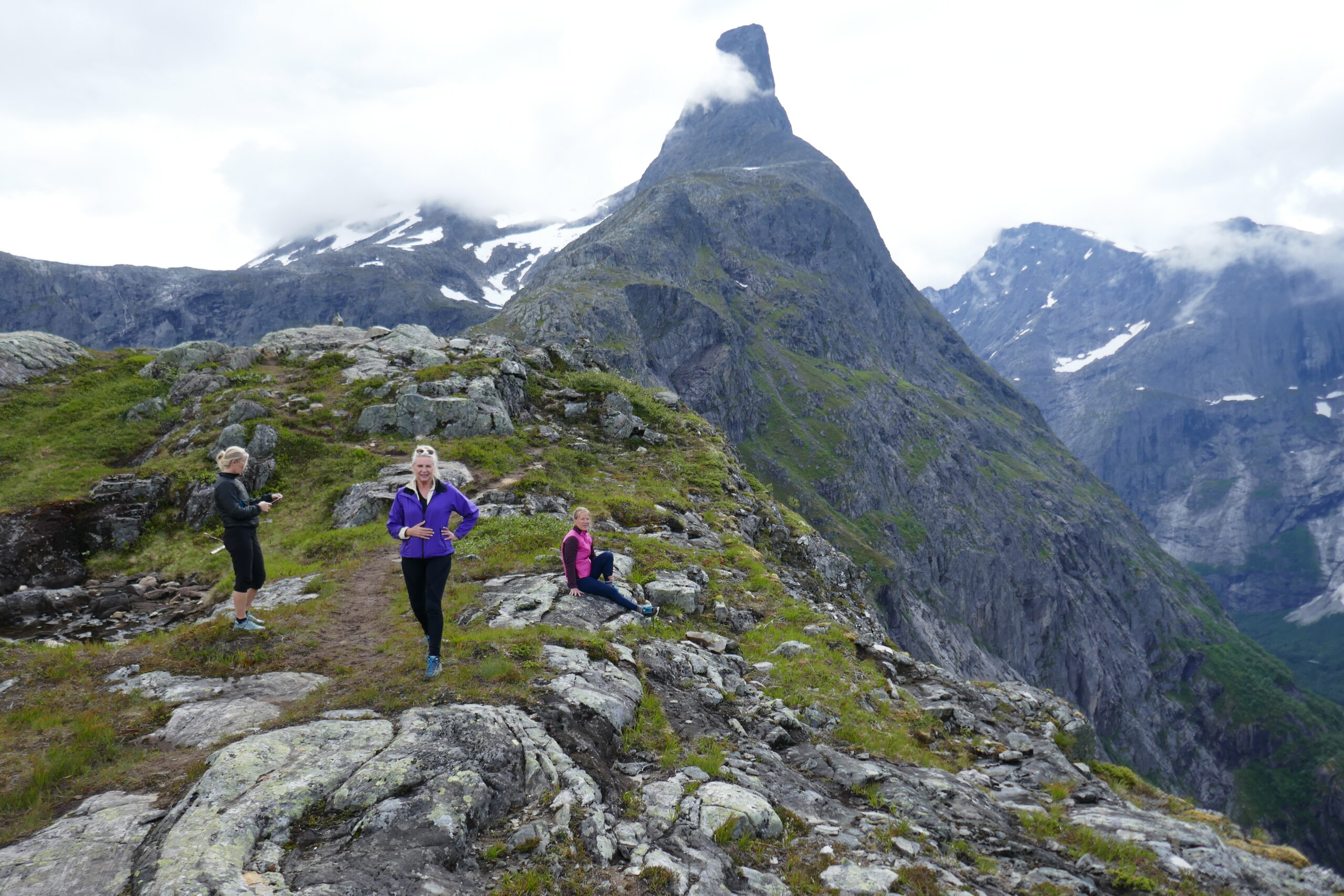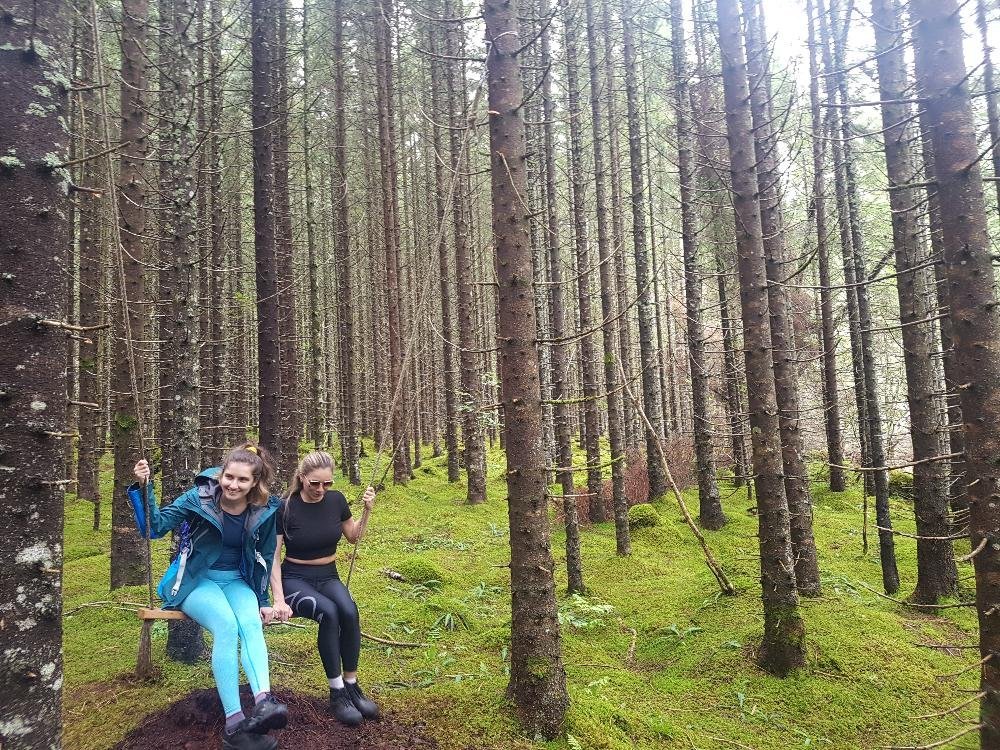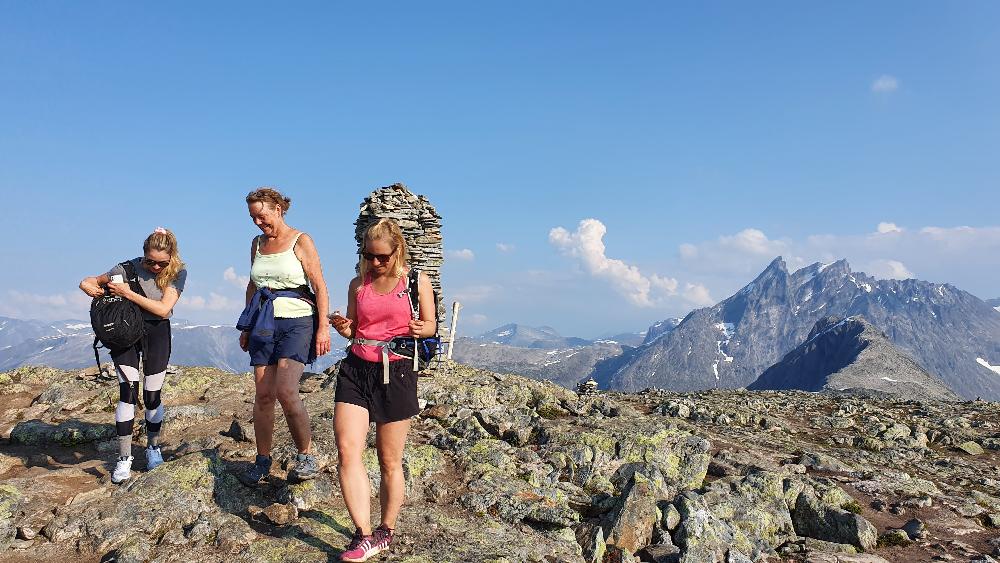Savasana, or Shavasana, is the Sanskrit name for an essential restorative asana. It is a key component of asana practice in almost every yoga tradition. It is most commonly used at the end of a sequence for relaxation and integration. However, it is also powerful as a stand-alone exercise to restore balance and combat stress. Some schools also use it to calm the body and mind at the start of a class and to learn and practice yogic breathing. In Yin Yoga, Restorative Yoga, Sivananda yoga class, and Yoga Therapy, Shavasana is sometimes practiced between postures to calm the nervous system.
The term is derived from two Sanskrit roots: shava, meaning "corpse," and asana, meaning "seat" or "posture." The first written record of savasana is found in a classic 15th-century yoga text, Hatha Yoga Pradipika, which says: “Lying down on the ground, like a corpse, is called savasana. It removes fatigue and gives rest to the mind”.



The Symbolism of Shavasana
In yoga philosophy, Shavasana represents a symbolic death. By letting go of physical and mental tension, practitioners "shed" their old selves and emerge renewed, much like a rebirth. It is an opportunity to release the ego and experience the interconnectedness of mind, body, and spirit. Shavasana is a profound surrender of the present moment, letting yourself be and meditating on that.
Scientific Perspective
Modern research supports the benefits of Shavasana, particularly in stress management. Studies show that practicing Shavasana can lower blood pressure, reduce heart rate, and decrease stress hormones like adrenaline and cortisol. It is also used in therapeutic settings to manage conditions such as anxiety, depression, and chronic pain.
Shavasana, or Corpse Pose, is a highly effective tool for activating the parasympathetic nervous system (PNS). This activation is critical in balancing the body and mind, especially in today’s fast-paced, stress-driven world.
The parasympathetic nervous system (PNS), often called the "rest-and-digest" system, plays a vital role in the body’s ability to heal. When the PNS is activated, it shifts the body out of the "fight-or-flight" mode dominated by the sympathetic nervous system (SNS) and into a state of relaxation and recovery. This activation lets the body focus on repair, restoration, and overall well-being.
How to practice Shavasana
Set Up Your Space: Choose a quiet and comfortable area. Use a yoga mat or a blanket for cushioning. Place a small pillow under your head or knees to ease neck or lower back tension.
Lie Down Comfortably:
- Lie flat on your back with your arms extended slightly away from your body.
- Palms should face upward, fingers naturally curling.
- Legs are straight, and feet fall naturally to the sides. If you feel discomfort in your lower back, place a bolster or rolled blanket under your knees.
Align Your Body:
- Ensure your spine is in a neutral position.
- Adjust your head so your neck feels lengthened, and avoid straining to either side.
Close Your Eyes and Breathe:
- Allow your eyes to close gently and your facial muscles to relax.
- Breathe naturally, noticing the flow of air without trying to control it.
Relax Every Part of Your Body:
- Mentally scan your body from head to toe, releasing any tension you may be holding.
- Start with your face, jaw, and shoulders, and gradually move down to your fingers, abdomen, legs, and toes.
Be Present:
- Focus on the sensations in your body, the rhythm of your breath, or simply the feeling of stillness.
- If your mind starts to wander, gently guide it back to your breath or physical sensations.
Stay Still:
- Remain in Shavasana for 5–15 minutes, depending on your schedule and needs.
- When you're ready to come out, deepen your breath, wiggle your fingers and toes, and roll onto one side before slowly sitting up.

Benefits of Shavasana
Physical Relaxation:
- Shavasana helps release muscular tension and allows the body to recover from physical exertion. This is why it is often practiced at the end of a yoga session.
Mental Clarity and Stress Relief:
- Shavasana calms the nervous system, reduces cortisol levels, and relieves mental fatigue by practicing conscious relaxation. Chronic stress impairs immune function, increases inflammation, and slows healing. By reducing stress hormones, the PNS creates a more favorable environment for healing.
Improved Concentration:
- Regular practice enhances mindfulness and concentration, making it easier to focus during daily tasks.
Enhanced Self-Awareness:
- Shavasana allows you to connect with your inner self, fostering greater self-awareness and emotional balance. Mind-body awareness helps individuals listen to their body’s needs, make healthier choices, and actively participate in their healing process.
Better Sleep:
- The deep relaxation experienced in Shavasana can improve sleep quality by helping to reset the body's stress response. Sleep is critical for healing because it’s when the body focuses on cellular repair, hormone regulation, and immune function.
Supports Healing:
- It activates the parasympathetic nervous system (rest-and-digest mode), promoting healing and restoring the body's natural balance. Chronic stress impairs immune function, increases inflammation, and slows healing. By reducing stress hormones, the PNS creates a more favorable environment for healing.
Though it may appear simple, Shavasana is a profound and transformative practice. It teaches us the art of relaxation, letting us let go of physical and mental burdens and connect to a more profound sense of peace. Whether you are a seasoned yogi or a beginner, embracing Shavasana can bring balance, clarity, and a sense of renewal. So, the next time you step onto your mat, remember that the stillness of Shavasana is just as valuable as the movement in any other pose.
Introduction
Yoga is an ancient practice that encompasses physical, mental, and spiritual disciplines aimed at achieving balance and harmony in life. It has deep roots in Indian philosophy and has evolved over thousands of years into a comprehensive system of well-being and self-realization. In today's fast-paced world, yoga has gained popularity as a means to relieve stress, improve physical health, and attain inner peace. This article aims to explore the multifaceted nature of yoga, delving into its history, principles, benefits, and modern-day relevance.
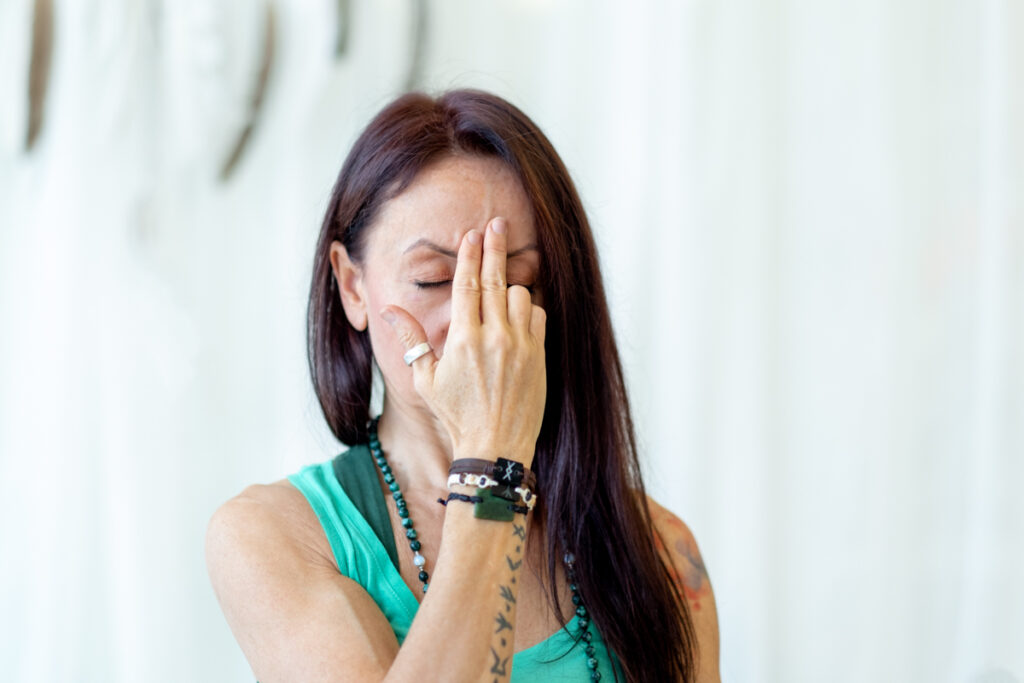
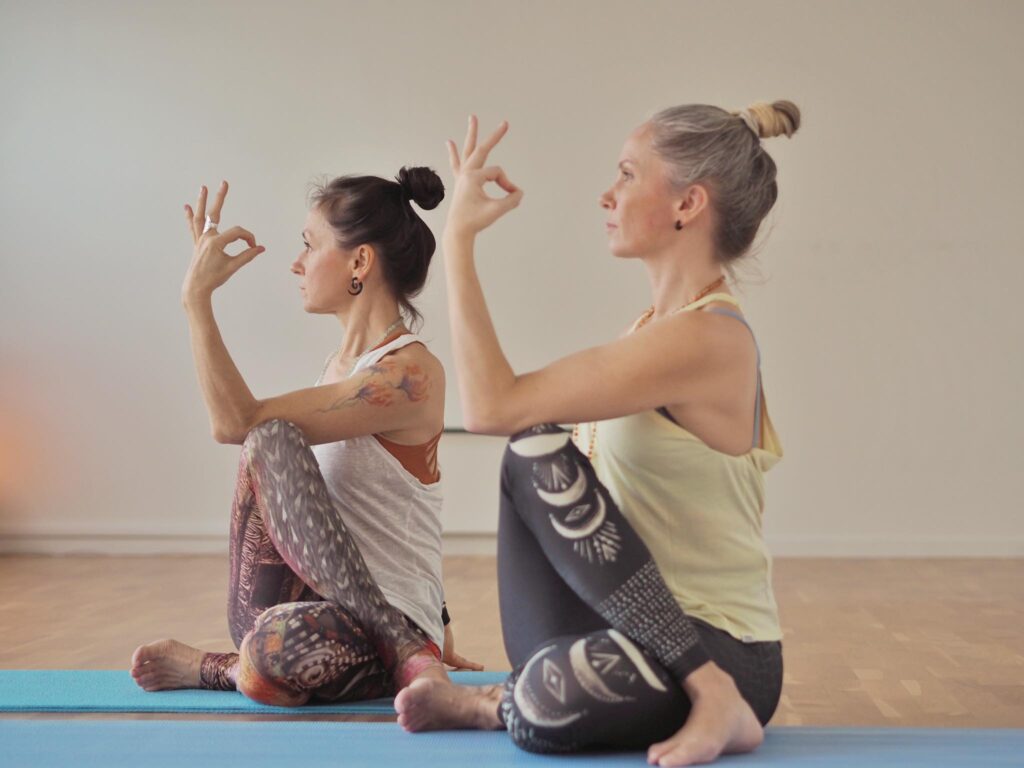
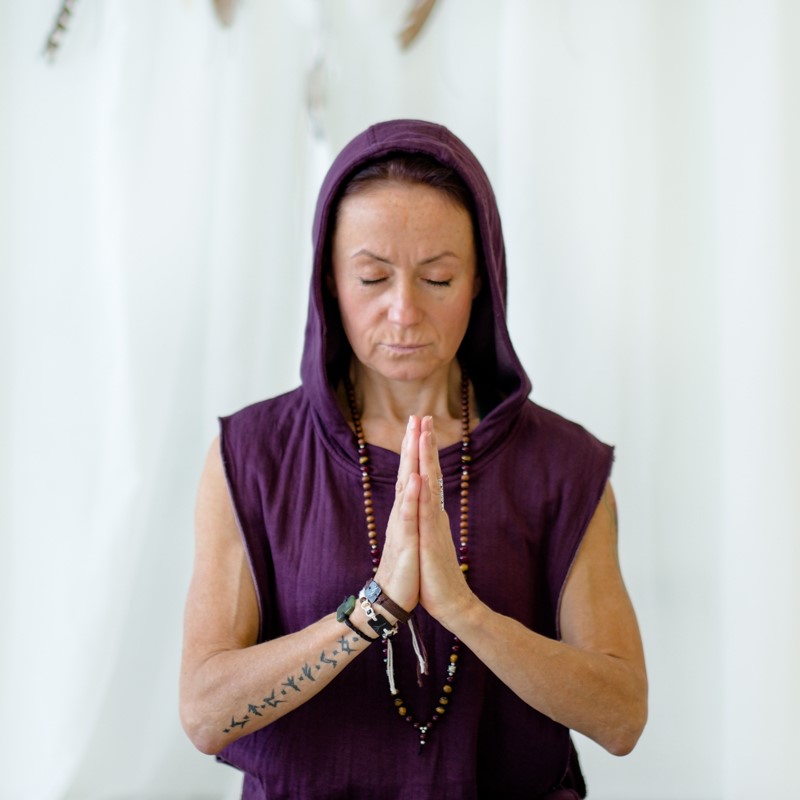
Historical Origins of Yoga
The word "yoga" is derived from the Sanskrit root "yuj," which means to yoke or unite. Its ancient origins can be traced back to the Indus Valley civilization, where archaeological evidence suggests the practice of yoga dates back over 5,000 years. However, it was the ancient Indian sage Patanjali who systematized the practice of yoga in his "Yoga Sutras," providing a philosophical framework for understanding the mind and achieving self-realization.
Patanjali's classical eight-limbed path of yoga, known as "Ashtanga Yoga," outlines a comprehensive system for personal development. It includes ethical principles (yamas and niyamas), physical postures (asanas), breath control (pranayama), sensory withdrawal (pratyahara), concentration (dharana), meditation (dhyana), and ultimately, spiritual absorption (samadhi). This holistic approach to yoga emphasizes the interconnectedness of body, mind, and spirit.
The Principles of Yoga
At its core, yoga is founded on a set of principles that guide practitioners toward holistic well-being. The practice of yoga seeks to cultivate self-awareness, compassion, and harmony within oneself and with the world. The principles of yoga are deeply rooted in ancient wisdom and have enduring relevance in modern society.
One of the fundamental principles of yoga is Ahimsa, or non-violence. This principle encourages practitioners to embody kindness and compassion toward oneself and others, fostering a sense of interconnectedness and harmony. Similarly, Satya, or truthfulness, advocates for practicing honesty and authenticity in thoughts, words, and actions. These principles, along with others such as Asteya (non-stealing), Brahmacharya (moderation), and Aparigraha (non-attachment), form the ethical foundation of yoga practice.
The Physical Aspects of Yoga
In the West, yoga is often associated with physical postures or asanas, which have gained immense popularity as a form of exercise and stress relief. These postures are designed to stretch, strengthen, and balance the body, promoting flexibility, muscular endurance, and overall physical well-being. From gentle restorative poses to dynamic and challenging sequences, yoga offers a wide range of practices suitable for individuals of all ages and abilities.
The practice of yoga postures is not merely about physical exercise; it is also a means of cultivating mindfulness and presence. By focusing on the breath and bodily sensations during asana practice, practitioners can develop a heightened sense of body awareness and mental clarity. This integration of movement and mindfulness sets yoga apart as a holistic discipline that nurtures the body-mind connection.
Breath Work and Meditation
In addition to physical postures, breath work, or pranayama, is an integral component of the yoga practice. Pranayama techniques involve conscious control of the breath to regulate energy flow, calm the mind, and enhance vitality. Deep, intentional breathing can induce relaxation, reduce stress, and promote mental clarity, making pranayama a valuable tool for achieving balance and emotional well-being.
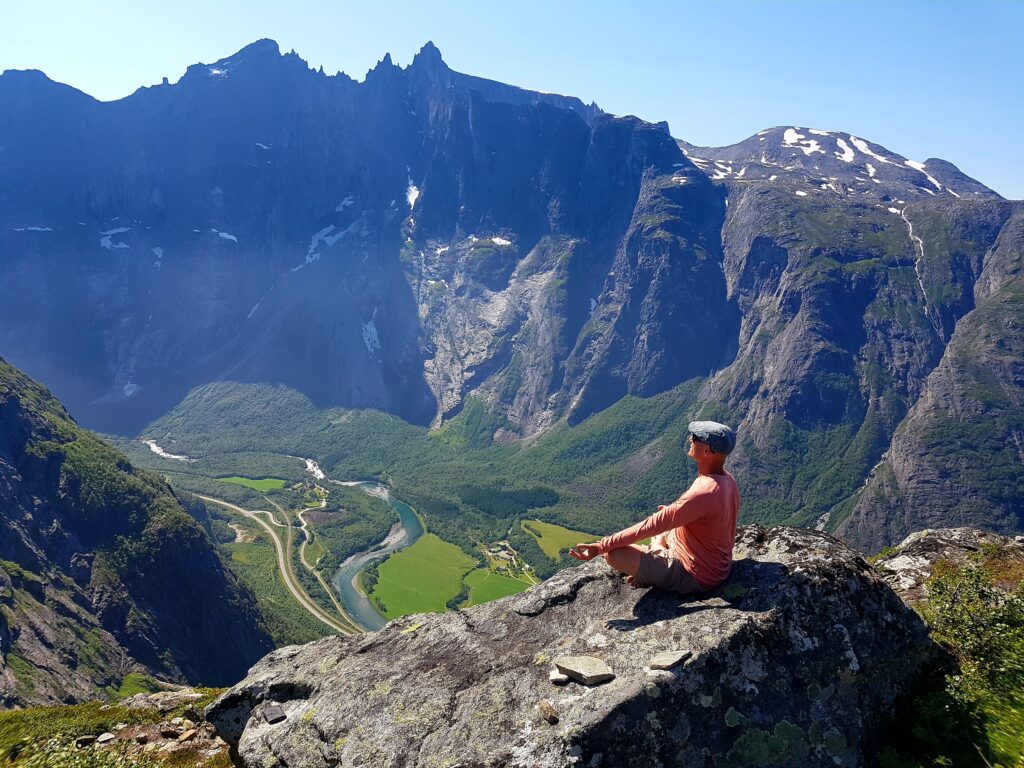
Meditation, the practice of focusing the mind and cultivating inner awareness, is another cornerstone of classical yoga. Through meditation, practitioners can gain insight into the workings of the mind, cultivate emotional resilience, and experience moments of profound stillness and tranquility. Numerous studies have highlighted the psychological benefits of meditation, showing its capacity to reduce anxiety, improve attention, and foster a sense of inner peace.
Yoga Beyond the Mat: Mindfulness and Daily Life
While the physical and mental benefits of yoga are often associated with the practice of postures, breathwork, and meditation, the essence of yoga extends far beyond the confines of a yoga mat. Yoga encourages practitioners to embody mindfulness in their daily lives, cultivating present-moment awareness, resilience, and compassion.
The practice of mindfulness, a central tenet of yoga, involves paying attention to the present moment with openness and curiosity. By integrating mindfulness into everyday activities, individuals can reduce stress, enhance focus, and savor life's experiences more fully. Simple practices such as mindful breathing, conscious eating, and gratitude journaling exemplify how yoga can be integrated into daily routines to foster well-being and emotional balance.
Yoga as a Spiritual Path
In its traditional context, yoga is not merely a set of physical exercises or relaxation techniques; it is a spiritual path aimed at self-realization and transcendence. The ultimate goal of yoga is to unveil the innermost nature of the self, transcending the limitations of the ego and realizing one's interconnectedness with the universe.
Spirituality in yoga is often expressed through devotion (bhakti), knowledge (jnana), and selfless action (karma). These paths provide different avenues for spiritual growth, allowing individuals to connect with the divine, seek wisdom, and serve others with love and compassion.
Yoga and Modern Science
In recent decades, the practice of yoga has garnered increasing interest from the scientific community, leading to numerous studies exploring its effects on physical and mental health. Research has demonstrated that yoga can have profound physiological and psychological benefits, including reduced stress, improved cardiovascular health, enhanced cognitive function, and alleviation of chronic pain.
Moreover, the integration of yoga with modern therapeutic approaches has given rise to practices such as yoga therapy, which applies yogic principles and techniques to support individuals in managing various health conditions. From depression and anxiety to chronic pain and post-traumatic stress disorder, yoga therapy has shown promise in promoting holistic well-being and addressing complex health challenges.
Yoga in the Modern World
As the pace of modern life accelerates and the prevalence of stress-related health issues rises, the appeal of yoga as a holistic practice for well-being continues to grow. Yoga has transcended cultural and geographical boundaries, becoming a global phenomenon that offers a pathway to physical, mental, and emotional balance.
In addition to traditional yoga studios and retreat centers, yoga is increasingly integrated into diverse settings, including schools, workplaces, hospitals, and community organizations. This trend reflects a growing recognition of the multifaceted benefits of yoga and its capacity to promote resilience, reduce burnout, and foster a culture of well-being in various spheres of life.
Moreover, the accessibility of online yoga platforms and virtual classes has further expanded the reach of yoga, enabling individuals to engage in practice from the comfort of their homes. This democratization of yoga instruction has made the practice more inclusive and adaptable to diverse lifestyles and needs, reflecting its enduring relevance in a rapidly evolving world.
Conclusion
In conclusion, yoga is a profound and multifaceted practice that encompasses physical, mental, and spiritual dimensions. Rooted in ancient wisdom and philosophy, yoga offers a holistic path to well-being, self-awareness, and inner transformation. Its principles, including mindfulness, ethical conduct, breath work, and meditation, provide a blueprint for living with greater harmony and compassion.
As yoga continues to evolve and adapt to modern contexts, its impact on individual and collective well-being becomes increasingly salient. From enhancing physical health and mental resilience to fostering a deeper sense of connection and purpose, the practice of yoga holds enduring relevance in our quest for holistic well-being and self-realization. Whether on the mat, in daily life, or the depth of spiritual inquiry, yoga offers a transformative journey toward balance, wholeness, and inner peace.
Here is the YouTube video if you want to try my 10-minute Grounding yoga at your home.
In Pranayama, breathing is elevated to a controlled, extended process of exhalation and inhalation. This generates the cosmic energy of prana, the life force that provides the strength, power, and vitality required for any activity - B.K.S. Iyengar
Pranayama is generally defined as breath control. Although this interpretation may seem correct because of the practices involved, it does not convey the full meaning of the term. The word pranayama is comprised of two roots: 'prana' plus 'ayama'. Prana means vital energy or life force. It is the force that exists in all things, whether animate or inanimate. Although closely related to the air we breathe, it is more subtle than air or oxygen. Therefore, pranayama should not be considered as mere breathing exercises aimed at introducing extra oxygen into the lungs. Pranayama utilizes breathing to influence the flow of prana in the nadis or energy channels of the pranamaya kosha or energy body.
The word Yama means to control and is used to denote various rules and codes of conduct. However, this is not the word that is joined to prana to form pranayama; the correct word is Ayama which has far more implications. Ayama is defined as an extension or expansion. Thus, the word pranayama means extension or expansion of the dimension of prana. The techniques of pranayama provide the method whereby the life force can be activated and regulated to go beyond one's normal boundaries or limitations and attain a higher state of vibratory energy and awareness.
Four aspects pf pranayama:
- Inhalation or pooraka
- Exhalation or rechaka
- Internal breath retention or antar kumbhaka
- External breath retention or bahir kumbhaka
The different practices of pranayama involve various techniques that utilize these four aspects of breathing.
The mind and breath
It is said that the mind and the breath are one's constant companions. Where there is a breath, there the mind is focused, and where there is an active mind, so is the breath focused. Pranayama seeks to quiet the mind, controlling it through the deep and rhythmic flow of inhalations and exhalations.
The sound of the breath
The pranayamic breath has a sound of its own: Soham. The sound of the inhalation is "as" and that of the exhalation is "ham". "Soham" has been interpreted as "He, I am and I am He". During pranayama, concentration is drowned solely in the action of the breath, and it is this attentive awareness of the breath that leads to the art of dhyana, or meditation.
The art of inhaling not only focuses the mind on the breath, but also brings one into contact with their essence, or soul. With the retention of the breath during the inhalation, the soul becomes wedded to the body. This is the divine union of the soul with our nature or body. During the process of exhalation, the soul re-enters into an unfathomable space. The mind dissolves and the divine marriage of Prakriti, the body, and Purusha, the soul, occurs.
Just as the practice of asanas, or poses, is seen as yoga in action, developing the individual's knowledge of the body, mind, and consciousness, the practice of pranayama is said to lead on toward the path of love minus lust, which is known as Bhakti Marga. Among the eight limbs of yoga, pranayama is therefore seen as the heart of the practice.
Contra-indications:
- Pranayama should not be practiced during illness
- Some pranayamas are not recommended for beginners
Time and place of the practice
The best time to practice pranayama is down when the body is fresh and the mind is very few impressions. If this is not possible, another good time is just after sunset. Try to practice regularly at the same time and place each day. Do not be in a hurry. Practice before eating in the morning or wait for at least three to four hours after meals before starting pranayama. Practice in a quiet, clean, and pleasant room, which is well-ventilated but not draughty. Pranayama should be performed after shatkarmas and asanas, and before meditation practice.
There are many different pranayamas:
- Nadi Shodana Pranayama. The word Nadi means channel or flow of energy and Shodana means purification. Nadi Shodana, therefore, means that practice that purifies the Nadis.
- Ujjayi Pranayama. The word ujjjayi means victorious, it is also known as psychic breath.
- Sheetali Pranayama which means cooling breath.
- Sheetkari Pranayama which means hissing breath.
- Brahmari Pranayama which means humming bee breath.
- Bhastrika Pranayama which means bellows breath.
- Kapalbhati Pranayama which means frontal brain cleansing breath. Kapalbhati is the practice that brings a state of light or clarity to the frontal region of the brain.
- Moorchha Pranayama which means swooning or fainting breath.
- Surya Bheda Pranayama which means vitality-stimulating breath.
Benefits of pranayama:
- Decreases stress
- Improves sleep quality
- Increases mindfulness
- Helps lower blood pressure
- Improves lung function
- Improves immune system
The blog post about powerful yogic breathing for beginners is here.
Nadi Shodana pranayama for beginners 12-minute YouTube video is here.
Nadi Shodana Pranayama with antar kumbakha 17 minutes youtube video is here.
You can start your yogic journey here.
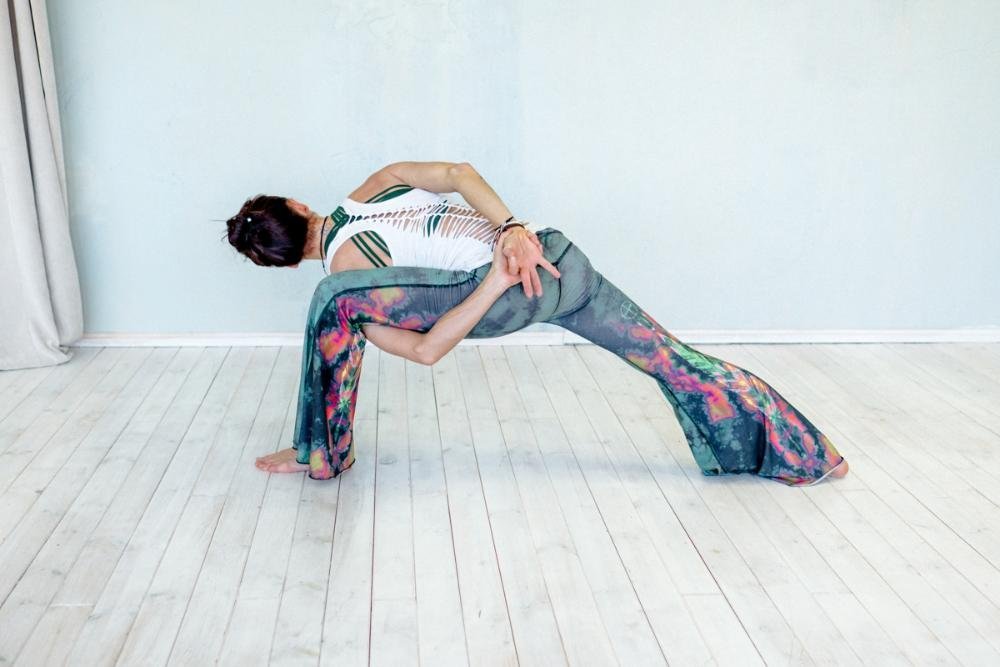
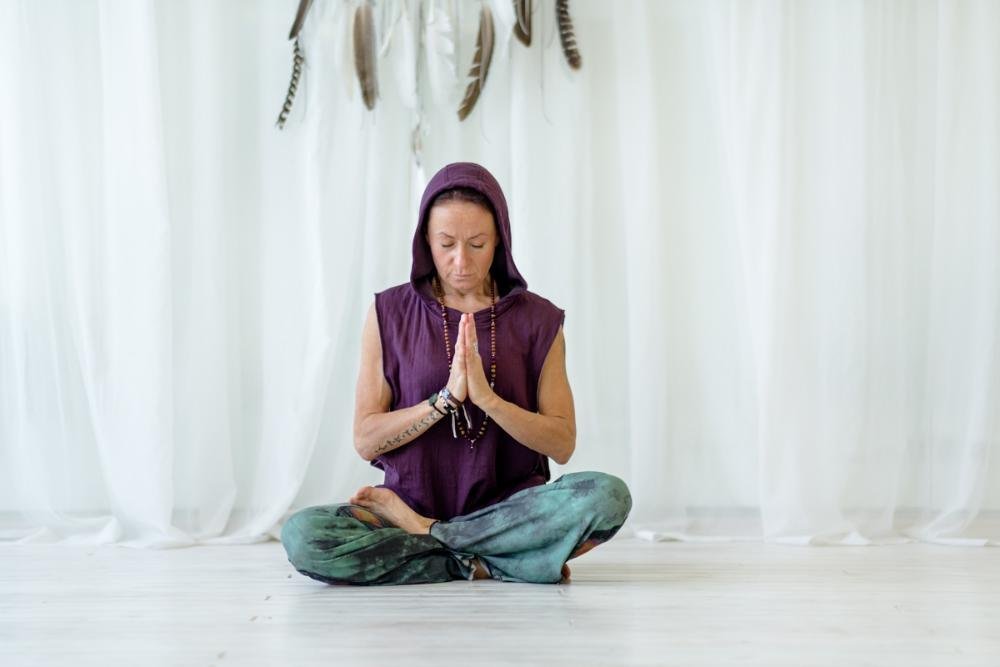
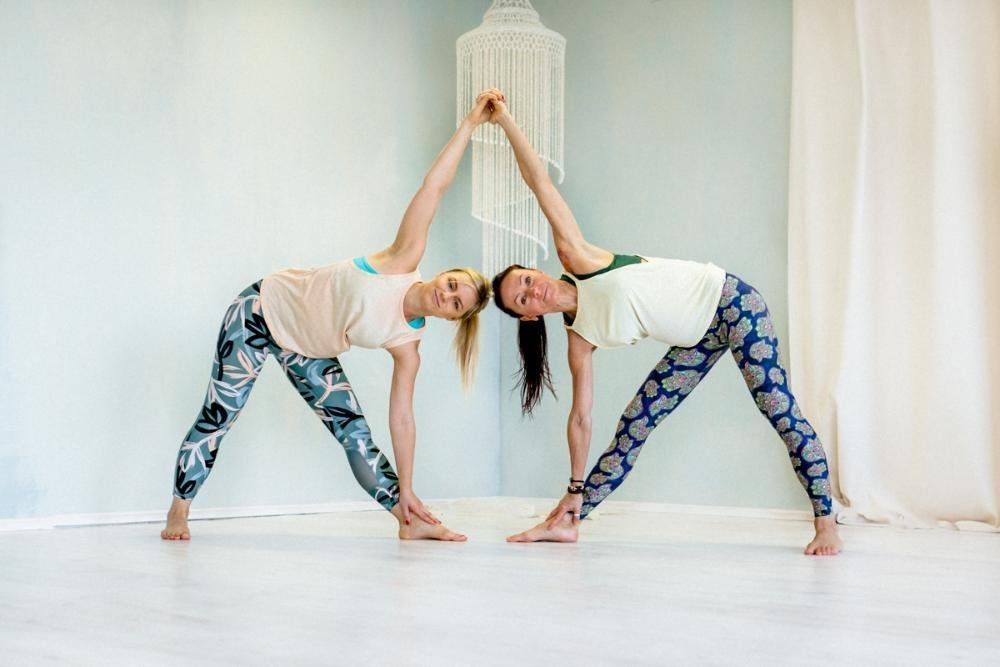
Unlock the secrets to a successful yoga journey on the 10 common mistakes to avoid when beginning your practice. Start your yoga practice on the right foot, cultivating self-awareness and embracing the transformative power of yoga.
Yoga is a beautiful and transformative practice that can bring physical and mental well-being into your life. Whether you're new to yoga or considering it a try, it's essential to be aware of common mistakes that beginners often make. By avoiding these pitfalls, you can embark on your yoga journey with confidence and success. Here are ten of the biggest mistakes to steer clear of:
1. Choosing the Wrong Class or Style
Not all yoga classes or styles are the same. Choosing the wrong one for your needs and preferences can lead to a lack of interest or motivation. Explore different styles and teachers to find what resonates with you. Determine what you want to achieve through yoga. Understanding your goals will help you select the most appropriate style. Take into account your current fitness level. Some yoga styles are more physically demanding than others. If you are new to exercise, you may want to start with a gentler style and gradually progress. You can read more about different styles of yoga here.
2. Being Impatient
Yoga is about the journey, not just the destination. Rushing through poses or expecting immediate results can lead to frustration. Patience is key.
3. Inconsistency
Yoga benefits from regular practice. Inconsistent or sporadic practice won't yield the same results as routine practice. Set a schedule that works for you and try to stick to it.
The act of setting aside time for yoga practice can instill discipline and mindfulness, making it easier for beginners to maintain the habit over the long term. The community and support from fellow practitioners in a yoga class can help beginners stay committed to their practice by providing a sense of belonging and accountability.
4. Comparing Yourself to Others
Yoga is a personal journey, and everyone progresses at their own pace. Constantly comparing yourself to others can lead to frustration and defeat the purpose of yoga's mindfulness and self-acceptance aspects.
5. Not Listening to Your Body
Disregarding the signals your body is giving you can be a significant mistake. If something doesn't feel right or causes pain, stop or modify the pose. Your body knows best.
6. Breathing Mindlessly
Yoga is closely connected to your breath. Breathing mindlessly or holding your breath can reduce the effectiveness of your practice and increase tension. Click here to can learn yogic breathing.
7. Pushing Too Hard
Overambitious beginners might push themselves too hard, trying to achieve advanced poses before mastering the basics. This can lead to physical strain and injury.
8. Skipping Warm-Up and Cool-Down
Neglecting to warm up before starting your practice and cool down at the end can lead to muscle strains and injuries. Always prepare your body and allow it to recover properly.
9. Ignoring Proper Alignment
Neglecting to pay attention to proper alignment in poses can result in discomfort, strain, and potential injuries. Learning and maintaining proper alignment is essential for a safe practice.
10. Not Embracing the Mind-Body Connection
Yoga is not just a physical practice; it's a mental and spiritual one. Neglecting the mindfulness and meditation aspects can limit the holistic benefits of yoga.
In conclusion, starting a yoga practice is a beautiful journey that can enhance your physical and mental health. By avoiding these common mistakes, you can build a strong foundation for your yoga practice, reduce the risk of injury, and fully embrace the transformative power of yoga. Remember that yoga is a personal journey, and there's no rush to achieve perfection. Embrace the process, practice patience, and enjoy the many physical and mental benefits that yoga has to offer.
To avoid these mistakes, consider starting your yoga journey under the guidance of a qualified teacher or by following instructional videos and resources designed for beginners. A structured and well-informed approach will help you build a strong foundation and ensure a safe and fulfilling practice.
Click here to find a step-by-step guide on how to start your yogic lifestyle.
Yoga retreats are temporary breaks from the daily routine that typically last from the weekend to a week or more. They allow yogis to deepen their practice without the distractions of life and are an amazing opportunity to meet others who are passionate about yoga.
The yoga and hiking retreat combines yoga and physical activity outdoors. A retreat starts and ends on a specific date, meaning you will be with the same group of people every day. You go to the same classes, have meals together, and spend a day outdoors hiking together. This allows you to get to know them and develop a friendship. A yoga and hiking retreat is not just another vacation; it is a powerful experience.
A yoga retreat will help you:
- disconnect and reflect,
- deepen your yoga practice and knowledge,
- step outside of your comfort zone,
- improve your health.
If you are a beginner or not very passionate about yoga, a yoga and hiking retreat will offer you the opportunity to start with regular practice and discover how yoga can help you find balance in your everyday life.
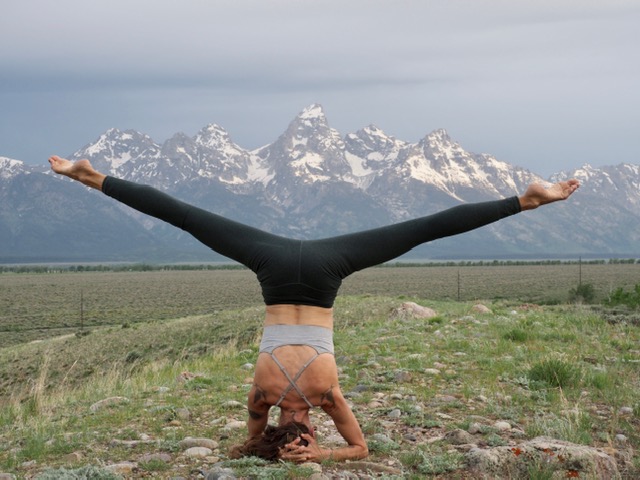
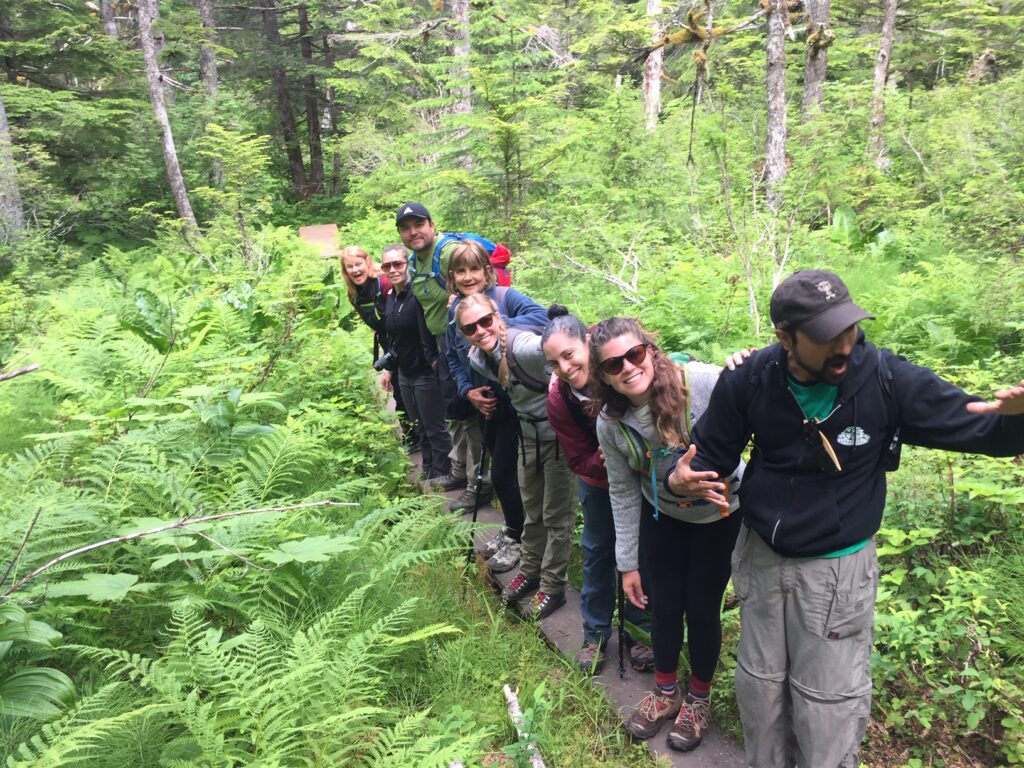
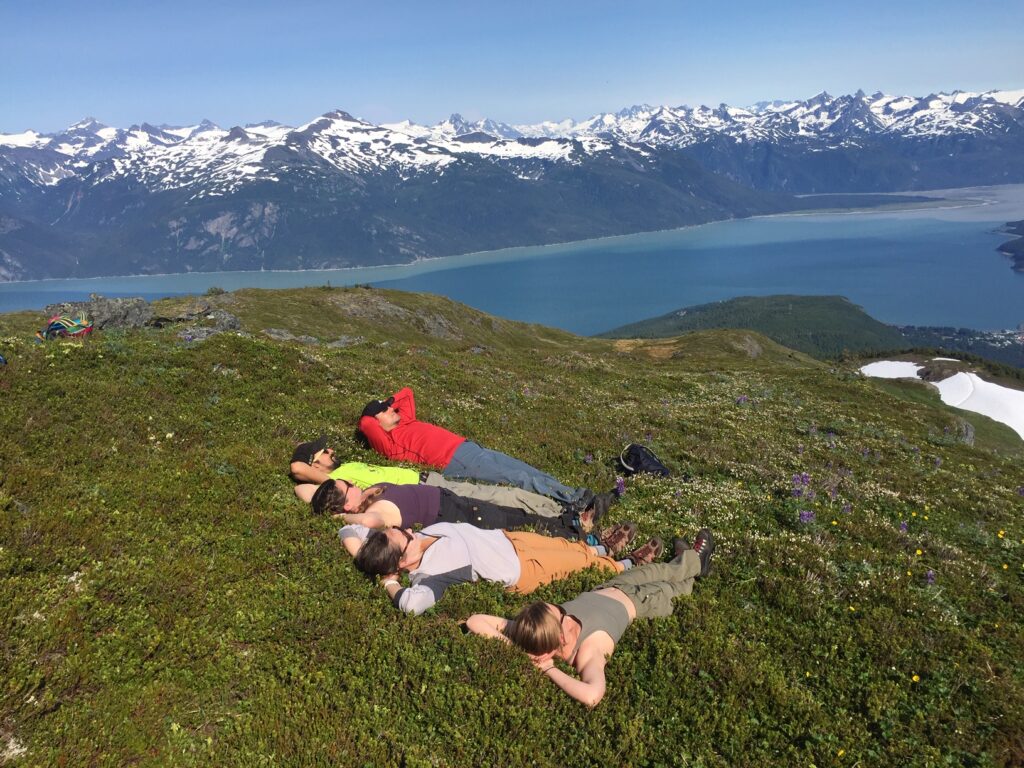
Why yoga and hiking retreat?
"Going back to nature is going back to the origin of life, to the origins of ourselves." The philosopher Henry David Thoreau said this about connecting to your inner self. There is plenty of time for self-reflection during the long hours of walking. Being far away from home and out of our comfort zone will present some obstacles, but we might also realize what truly matters to us and what the purpose of our lives may be.
"Who am I?" is the ultimate question in yoga philosophy. This is precisely why connecting with nature and practicing yoga simultaneously form a perfect combination. Both will help you learn about your true self. The yoga and hiking retreat is a simple way to reconnect with your inner self and understand yourself better.
Read more about our yoga and hiking retreats in Norway.
Hiking versus walking the Camino de Santiago
Walking the Camino de Santiago has been and still is on a bucket list for many people. Yoga and hiking retreat is like walking the Camino but it is a softer version of the Camino way. You know where you will sleep every night and always have wi-fi when needed. You will also prepare your body for a long day outdoors with morning yoga sessions, stretch and relax your tired muscles every evening, and eat healthy and nutritious food during the journey.
However, yoga and hiking offer many of the Camino walk's benefits. Additionally, spending days in the fresh air will prevent you from becoming infected with viruses and strengthen your immune system.
Top 3 reasons why people walk the Camino de Santiago
Camino de Santiago, known in English as the Way of St. James, is a network of pilgrims' ways or pilgrimages leading to the shrine of the apostle Saint James the Great in the cathedral of Santiago de Compostela in Galicia in Spain.
Spiritual reasons
Many pilgrims walk to connect and discover the deeper meaning of life, spiritually connect with nature or themselves, or find answers to deep questions.
Disconnect to reconnect
Many of us have become disconnected and disillusioned in a world of busyness with too many obligations and long workdays. We all say we would like to disconnect a bit but typical vacations are anything but answering e-mails at the pool and watching or reading the news after dinner, we seem never to have the opportunity to truly "get away from it all". At first, it may seem strange to not constantly think about what is happening in your country or not check your phone every 15 minutes but soon you find peace and silence in the journey. Adjusting takes a few days, but the reward is clarity and peace.
Exercise and well-being
Most people have little to no experience walking long distances over many days. A popular saying is, "Your Camino begins when you sign up." You begin to research what shoes to bring, how to train and prepare your body, and what you should pack. Many people start training to become healthier and more fit for the trip.
Will you be fully vaccinated soon? Or have you taken your COVID-19 vaccination and are looking to travel sometime in the near future?
As vaccines are being rolled out across the world, it brings the promise of a return to our pre-pandemic life, or, at the very least, something close to it.
That said, it’s important to keep in mind that while these shots do come with some protection against the virus, some regulations, such as lifting the mandated use of masks, may not be happening as soon as we’d hoped.
Should you choose to travel sometimes in the near future, it’s highly advisable to continue to take health & safety precautions, such as wearing a mask, washing your hands often, and maintaining the practice of physical distancing.
While it’s not mandatory, you should also consider getting tested 3 to 5 days after arrival and self-isolate for 7 days, even though you are fully vaccinated. We are still unsure as to how much protection the vaccines offer against the new variants of the virus (and the strains continue to emerge), so, it’s always better to be safe.
In short, being fully vaccinated does give you more ‘freedom’ and peace of mind when it comes to travel but it’s in you & your fellow travelers’ best interest to maintain precautions when traveling.
Not only is it crucial for us to ‘adhere’ to local rules but also to keep personal consideration and precaution for the sake of your and others’ health and safety.
Even if you are fully vaccinated, these days, the type of travel you choose to take matters more than ever.
Domestic travel has been returning slowly but steadily starting last summer. With the rollout of vaccines, countries that are likely to reach herd immunity faster, maybe a ‘safer’ choice for locals and non-locals alike.
Many travelers are now choosing destinations that are off-the-beaten paths, those that are away from condensed cities, and often, these places are immersed in nature.
A yoga retreat in nature is a great choice for any traveler. Some retreats are easy-going while others go above and beyond to offer a wealth of activities. But no matter where you choose to go, it is easy to combine other outdoor activities such as hiking, walking, cycling, or running with your yoga sessions.
To get to your travel destination, road trips are recommended as non-public transportation is safer than using public transportation. In fact, according to the CDC, fully vaccinated travelers who go on a road trip and are moderately careful at the destination, would have a relatively ‘safe trip’.
Another way to lower risk is to choose to visit a country that is waiving restrictions for fully vaccinated travelers. At the time this article was written, only a handful of countries have gone this route, but, as summer approaches and the vaccine passports are likely to become a reality, more and more countries would consider this option to open for travel.
Lastly, should you choose to travel internationally, it’s better to focus on visiting one country, rather than opting for a multi-country itinerary. Now is the perfect time to focus on slowing down, taking longer to explore a country, immerse in its culture and traditions, and discover local gems.
It’s also important to keep in mind that while the entry requirements into a certain country might not include showing a negative test, the airline might require one to board the plane. Do your due diligence and check the requirements ahead of time so that you can plan accordingly.
Nothing supports our mind and soul to open up like a natural setting. The usual distractions are far away, and your attention and focus are directed towards what’s in front of you, quieting the mind and simplifying your thoughts.
Being in nature awakens your senses – touch, scent, sight – and you cannot help but become more aware of what’s around you and start to appreciate the little things you might usually take for granted.
The smell of morning dew and flowers, a simple bird song, a gentle breeze in your hair, touching the grass or sand, provide stimulation and make you more present. You become more in tune with yourself and the world around you.
On most retreats held in nature, you’ll have the opportunity to do some forest bathing. Also known as Shinrin-yoku, this is the practice of making contact with and taking in the forest atmosphere to receive mental and physical healing.
Read more about our yoga and hiking retreats in Norway, Alaska, and Estonia.
There are large variations in intensity between styles of yoga based on oxygen consumption and heart rate. Variation in intensity between yoga styles was due to the variability of what practitioners were doing over the whole arc of a yoga practice. Yoga practice could range from higher intensity sun salutations to lower intensity seated postures. A heated practice room, such as that in Bikram, and length of holding postures also contributed to differences in intensity ratings.
Students seek out a yoga class or practice for many different reasons. Additionally, what we mean by yoga varies considerably from one practice style to another. For these reasons, it can be helpful to identify some objective measures to describe individual yoga styles. This can help new practitioners make more informed choices about what yoga styles to begin with when they are starting out, based on what their intentions are with respect to starting a yoga practice.
Yoga is a versatile, variable tool that can have an impact on many different aspects of our well-being. We may seek out a yoga practice for many different reasons. So, it’s helpful to have a clearer picture of what individual styles of yoga offer. This article provides information about the physiological impacts of common styles of yoga practice. That can help us make choices about which style might be a good fit for us.
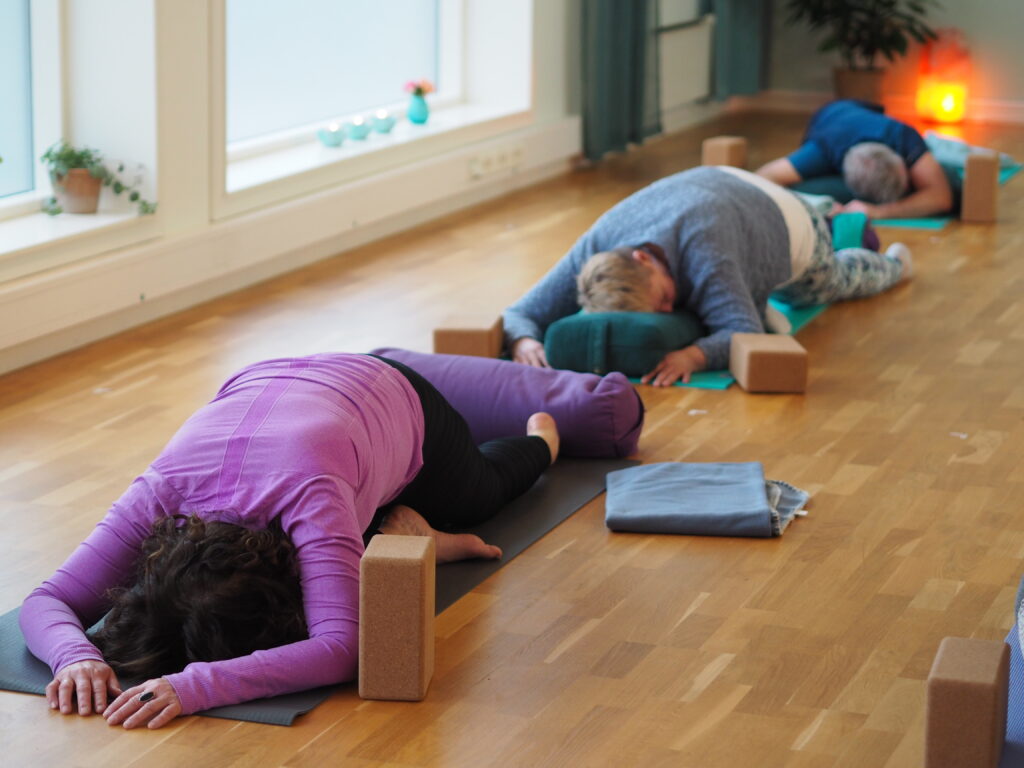
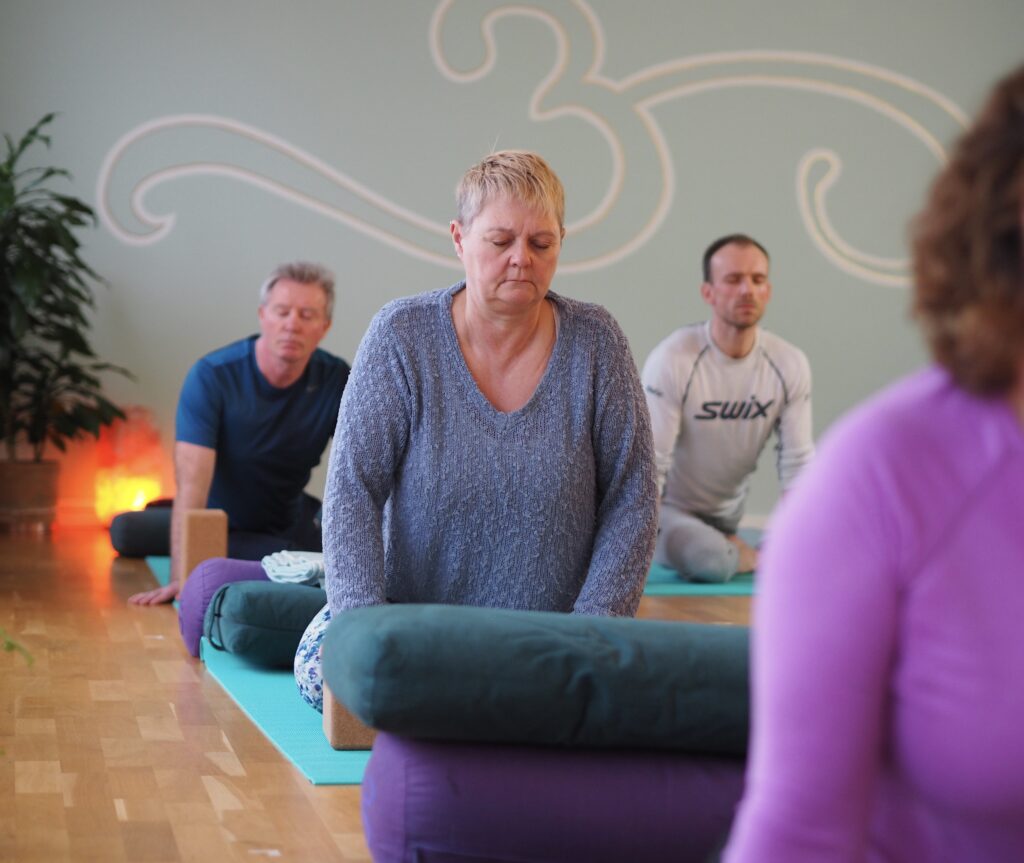
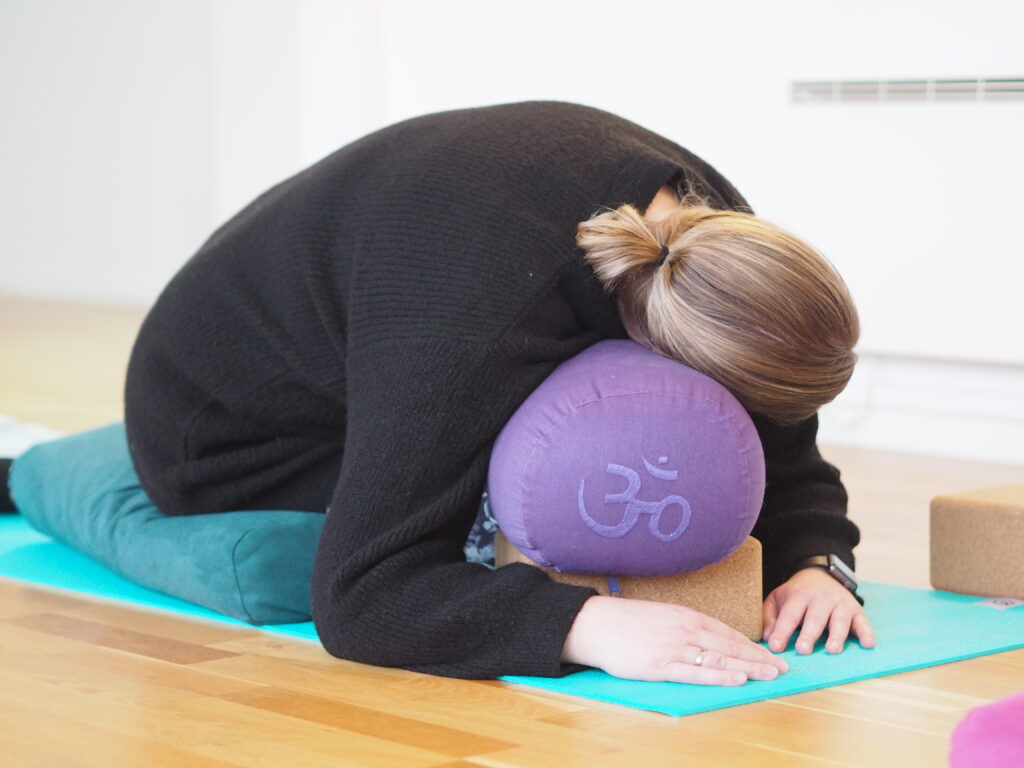
The intensity of yoga styles based on oxygen consumption:
- Hatha, Gentle or Soft Flow = light
- Yin = light
- Bikram = light
- Ashtanga, Vinyasa, Rocket = moderate
The intensity of yoga styles based on heart rate:
- Yin = light
- Bikram = vigorous
- Gentle = light
- Hatha = light/moderate
- Iyengar = light/vigorous
- Power = moderate
- Ashtanga, Vinyasa, Rocket = moderate
Ashtanga Vinyasa Yoga, Rocket Yoga and Vinyasa Flow
Ashtanga Vinyasa Yoga
is an ancient system of yoga. For each movement, there is one breath. Ashtanga Vinyasa Yoga is both a dynamically aerobic and meditative practice. It was primarily introduced to practitioners in the West by Shri K. Pattabhi Jois, a dedicated yogi, and Sanskrit scholar. As taught by Jois, Ashtanga Vinyasa Yoga is a form of Hatha Yoga that focuses on asana (posture), pranayama (breath control), and vinyasa (the linking of postures by breath and movement). An important part of Ashtanga Vinyasa Yoga is a deep sort of breathing we call ujjayi or victorious breath, bandhas or energy locks, and Drishti or our eye gaze.
Rocket Yoga
also known as "the Rocket" is a style of yoga, developed by Larry Schultz in San Fransisco during the 1980s. Rocket yoga is rooted in the practice of Ashtanga Vinyasa Yoga. It is composed of poses from the Primary and Intermediate series of Ashtanga. It was first called "Rocket" by Bob Weir because "it gets you there faster." Rocket Yoga is a dynamic and fast-paced flow of yoga. Students are encouraged to make their own interpretation of the traditional asana or can remove or modify binding postures that tend to cause students to get stuck in the traditional series. The Rocket is also divided into a three-part series: Rocket 1, Rocket 2, and Rocket 3. Each series focuses on targeted body strength and flexibility. Typically, Rocket 1 is practiced on Monday and Thursday, Rocket 2 on Tuesday and Wednesday, Rocket 3 on Friday, and Ashtanga Primary Series would be practiced on Sunday, and optionally on Thursday instead of Rocket 1. As in the tradition of Ashtanga Yoga, Saturday is the day to rest from physical forms of yoga. The Rocket 1 series is based on the Modified Primary Series. The Rocket 2 is based on the Intermediate series of Ashtanga Vinyasa Yoga. Rocket 3 (aka "Happy Hour" because you get two classes for one) is a combination of Rocket 1 and Rocket 2, practiced at a brisk pace to cover 90 poses in 90 minutes.
Vinyasa Flow Yoga
is also a dynamic yoga style but it can vary from soft to vigorous depending on the level of the group or student. Vinyasa Yoga is a teacher's interpretation of traditional yoga practice, based on the purpose of the class. If we want to emphasize that the class is slow-paced then we can call it Soft or Slow Vinyasa Flow or Gentle Flow. In a typical Slow Flow class, you will practice about half the number of poses you might practice in a Vinyasa Flow class. The pace is meditative, emphasizing peace and calm in body and mind. We hold poses longer, taking several rounds of breath in each pose, instead of moving to each breath. In that class, the asanas are practiced with an internal softness. You will focus on working in the poses using your breath, movement, and internal strength rather than the outer muscles. That type of Yoga is of medium intensity and the best way to start with your yoga practice to find out your preferences.
Yin Yoga
is a part of the original Hatha Yoga tradition. It combines the influences of Indian Yoga with Chinese Daoist practices and Western science to improve our health on many levels. With its emphasis on long-held, passive stresses of the deeper connective tissues, Yin Yoga mobilizes and strengthens our joints, ligaments, and deep facial networks. Most poses are done lying or sitting on a yoga mat or soft carpet and held for 2-5 minutes. In Yin Yoga class we're not stretching the tissue but rather, stressing it, and then allowing time for rest and repair. We are using the physical postures to help us in getting to a unity of the mind and the body. It is a platform for meditation. You can find a yin yoga video by clicking here.
Restorative yoga
is a deeply relaxing style of yoga practice. It is a receptive practice, not an active practice. Unlike the more active styles of yoga where poses "flow" into one another, restorative yoga poses are held from five to as long as twenty minutes. During this time, you are held in "shapes" while being supported with blankets, blocks, or bolsters (pillows). The shapes emulate the forms of some more active poses found in Ashtanga, Vinyasa, or Iyengar such as backbend, forward bend, twist, or inversion. When you are in the poses you are completely supported in a particular shape, which helps achieve the desired benefit - it could open up your lungs, release tension in your lower back, or any of the other physical or psychological benefits. In any style of yoga, part of the practice is about letting go of the ego. Restorative yoga is no different. Yoga teaches patience, devotion, and faith. When you apply the teachings both on and beyond the mat, your mind is better able to adjust to the stresses of everyday life and is brought into harmony with your body. You can find a restorative yoga video by clicking here.
Read more about yoga history, philosophy, and styles by clicking here.
As the end of the year 2021 is approaching let's be grateful for all the good that happened and celebrate our victories!
The end of the year is always a good time to look back and reflect. 2021 has been a difficult year for many, but there is always something good to be thankful for. In order to set new goals, we must first identify where we are now and how we got there. Is your life in balance? What needs more attention? What can you give up?
The best way to reap the benefits of gratitude is to notice the new things you're grateful for every day. Gratitude journaling works because it slowly changes the way we perceive situations by adjusting what we focus on. While you might always be thankful for your great family, just writing “I’m grateful for my family” week after week doesn't keep your brain on alert for fresh grateful moments. Get specific by writing “Today my husband gave me a shoulder rub when he knew I was really stressed” or "My sister invited me over for dinner so I didn't have to cook after a long day." And be sure to stretch yourself beyond the great stuff right in front of you. Opening your eyes to more of the world around you can deeply enhance your gratitude practice. Make a game out of noticing new things each day.
A New Year's Resolution is a list of goals you'd like to accomplish in the upcoming year. This tradition is followed by millions of people every year, and it's a great way to start the year with a positive mind and clear goals!
New Year resolutions
Sometimes figuring out how and what to write on your list can be overwhelming and confusing. But as long as you keep these five tips in mind, you'll have the perfect New Year's Resolution.
- Focus on self-improvement
- Be specific
- Set a timeframe
- Keep it short and realistic
- Get out of your comfort zone and have fun
It is important to have goals that will help you become a better person. Doing more sports, eating healthier, donating to charity, and learning a new language or instrument are the kind of things that people tend to write in their New Year's Resolution. Also, focus on yourself and not the people around you.
Remember to write down specific goals, such as “eating one piece of fruit every day” instead of “eating healthier,” so you can measure your success!
It's better to have realistic goals that you know you can accomplish than to have goals you might never reach. Stay focused on a few realistic goals instead of having a long list of impossibilities.
Don't forget what New Year's Resolutions are all about: trying new things you haven't done before and having fun while doing so! Don't feel disappointed or pressured if you don't accomplish your goals by the end of the year. Remember to just have a great time and learn from every experience!
New Year's resolutions are meaningless without the habits to help you stick to them. Don't rely on willpower when it comes to your New Year's resolutions. All you need is to create small, new habits. When the change is small, it is easier to implement and be sustainable.
Do your New Year's resolutions include a healthier lifestyle? More exercise, yoga, meditation, healthy food, growth, and development?
I think it is important to start each day with the right foot, even if it means needing to push past any feelings of grogginess or tiredness to do so. New Year's promises are easily forgotten. Therefore, you should update and renew your goal every morning. Create your morning ritual. Find a substitute for the habits you want to change. This makes the transition easier.
Set an intention for every day. It can be done on your yoga mat, in the bathroom, or while drinking your morning coffee. Be aware of your choices and mindful of your actions. Our intentions create our reality.
There are certain steps you can take each morning that could help improve your physical mobility, mental clarity, and focus while eliminating any stiffness, grogginess, or tiredness that often accompanies mornings. In the mornings our bodies are stiff and sore and the older we get the worse.
A short yoga-meditation routine every morning helps you to:
- set an intention for every single day, week, and month
- remember your New Year's resolution and move in the right direction
- loose up your muscles, removing stiffness
- increase energy in the body
- decrease stress and anxiety
- stay calm and focused during the whole day
- be present and balanced
- improve mental clarity
- be the best version of yourself
You will find my 10 min Grounding Yoga youtube video by clicking here.
Becoming grounded - is one of the most desired results of practicing yoga. Grounding connects us to the present moment. It pulls us into our physical experience of right now, and in the process, creates a sense of ease in the mind and stability in the body. Grounding creates calm, destroys stress, and reminds us of who we are by diverting our attention from thinking and making us feel at home in our own bodies. The process of grounding is an invitation to trust that we are and will be supported. It's a reminder of our deep connection to the earth beneath us, and the power it has to affect the way we think, feel, and express ourselves.
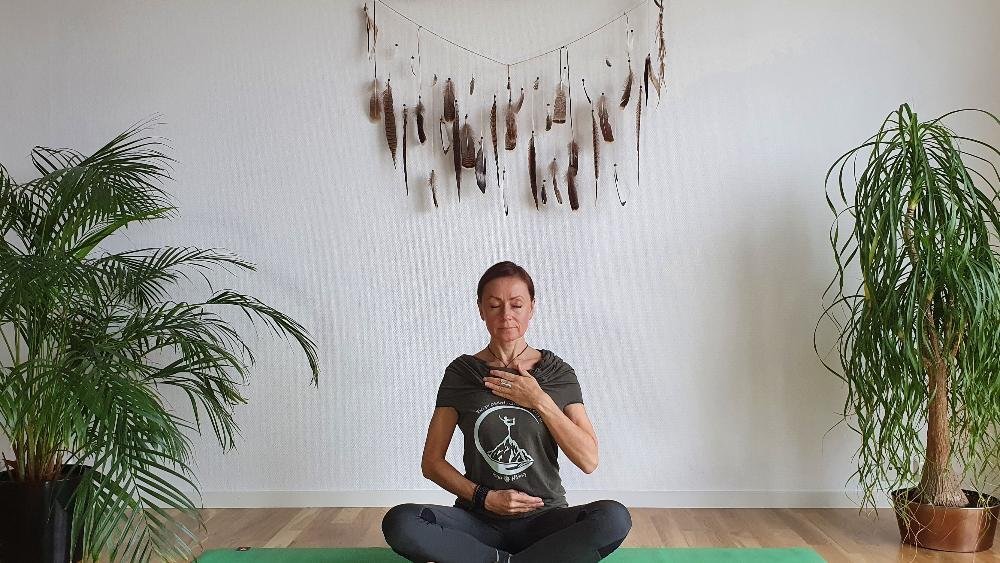
Estonia should be your next yoga retreat destination. Here's why
Estonia is a hidden gem packed with opportunities to try something new and have experiences you would not have in most other countries.
Estonia has a long history of different settlers from Vikings to the medieval merchants of German, Swedish, Danish and Russian descent. Today’s Estonia is an exciting mix of old and new. The capital Tallinn is the best preserved medieval city in Northern Europe and its Old Town is listed as a UNESCO cultural heritage sight. At the same time, it is a bubbling and innovative city filled with trendy cafes, restaurants, and shops. Driving out of the city for only an hour and you will find yourself in wild nature.
If you want to combine a relaxing yoga holiday in nature but also experience some of the rich cultural life in a historical setting – Estonia is the perfect holiday destination for you. Estonia is a very compact country so you can cover a lot in just a week.

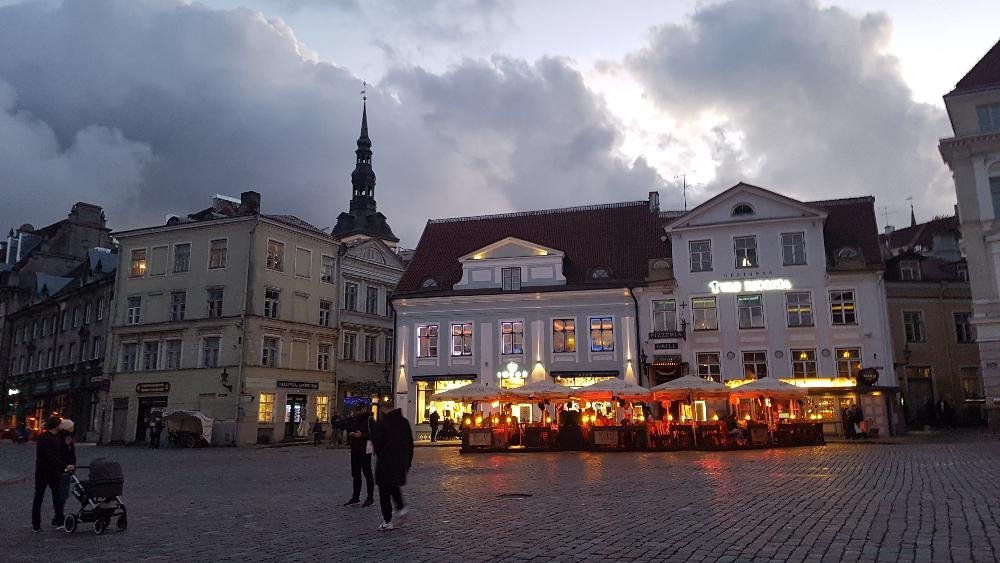

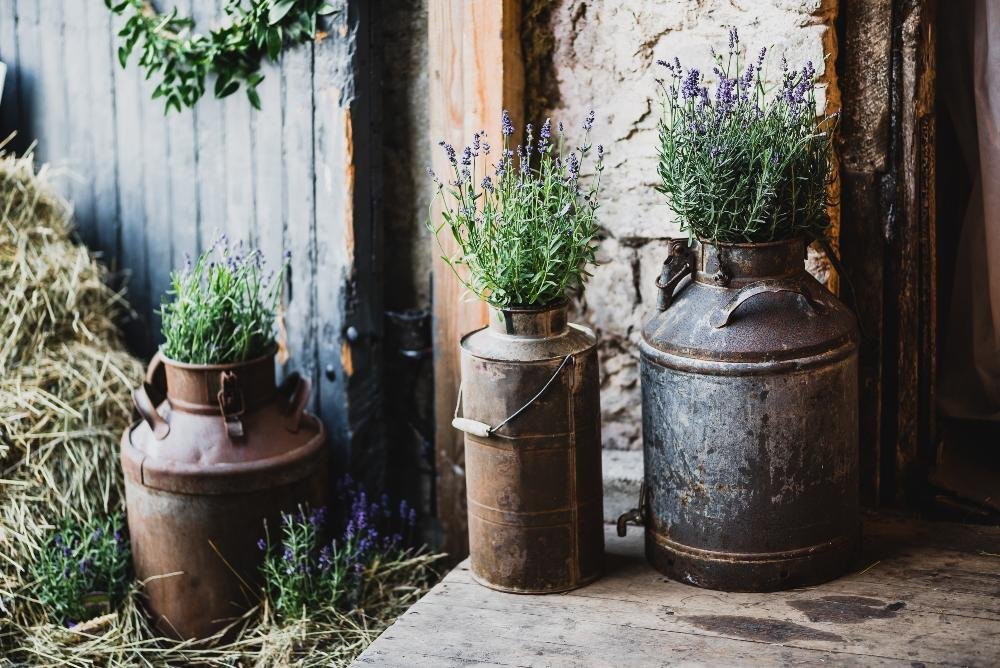

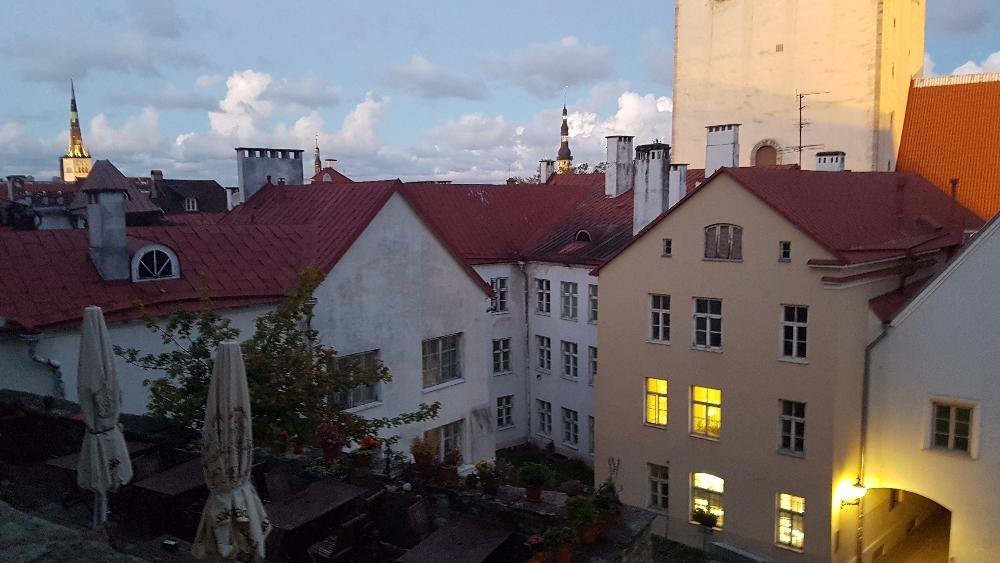
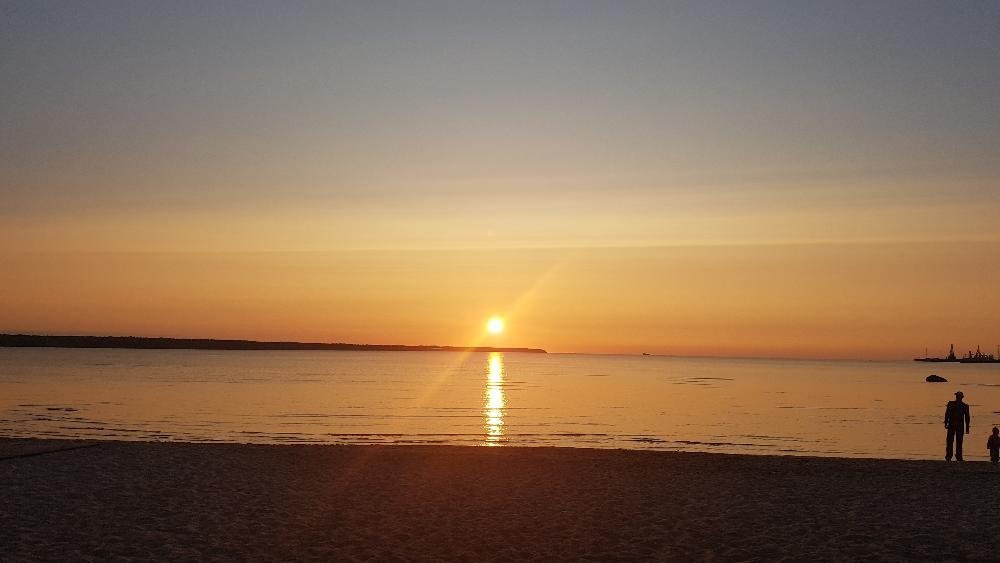

A Yoga Retreat in Estonia will offer you:
- A relaxing week staying in a spa in a small seaside village near the capital Tallinn. It is a perfect location for a getaway to recharge your batteries, enjoy massages, saunas or other wellness and beauty treatments, sunbathe and swim in the sandy beaches.
- A chance to discover the spectacular nature of Estonia. The country is famous for its untouched wild nature and especially its beautiful bogs. You can have a once in a lifetime experience by visiting a bog on sunrise – the unique landscape with sun rays slowly emerging through the morning mist is something that you will never forget. At the end of the trail you can enjoy the view from a watchtower or take a refreshing dip in the lake.
- An acquaintance with the culture and history of Tallinn. The retreat will take place near the capital Tallinn, so there will be several options to discover its rich cultural scene. Tallinn offers a versatile experience to anyone interested in architecture, history, design and handicrafts as well as to foodies who are looking for great culinary experiences.
- New friends among like-minded people (solo travelers are welcome!), time for yourself to relax and rewind, lots of yoga and physical activity outdoors, healthy and tasty food. What else could you want from a holiday?
You will be accompanied by a local guide Pille, who was born and raised in Estonia. She will guide you through the yoga lessons, take you to the local’s favorite places that you won’t find in a travel guide and help you with everything you might need for a comfortable stay.
Read more about our Estonian yoga retreat by clicking here.
What is Sun Salutation and why we practice it
Surya - the Sun, soul, source of all life
Namaskar - greening or salute
Sun Salutation originated in the Hatha Yoga tradition in the 9 century in India. Many variations are possible. Surya Namaskar is a series of postures (asanas in Sanskrit) linked together in a graceful flow. It can be a complete practice in and of itself or used to warm up and prepare the body before your yoga practice. In Ashtanga Yoga there are Sun Salutation A and B which are slightly different from Hatha yoga Sun Salutation. It is a beautiful greeting, but it was also meant to be a transformative experience to release the burden of our personal obsessions and just come back to the essence, The power of a Namaskar is in its refined simplicity; the combination of movements creates a physical, mental, emotional, and spiritual syncopation. In ancient times people would practice Surya Namaskar at sunrise, facing the Sun in the East.
The Benefits of Sun Salutations:
- Increases blood circulation
- Boost energy
- Unwind the mind – find your center
- Find gratitude
- Creates more strength, flexibility, and tone to the body
- Opens and releases tension in the hamstrings, shoulders, and the chest
- Offers great release of tension on the spine as well as helps lengthen the spine
- Lubricates the joints
- Ensures Heart Health
- Great for the Lungs
- Boosts Immunity
- Becomes meditative through the motions - a prayer in motion
- Aids in weight loss
- Improves digestion
- Calms the nervous system
- Improves kidney function
Want to start with yoga? Free course for beginners here.


